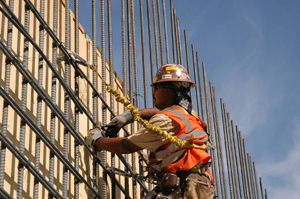Do you know good safety when you see it? A cursory survey of a typical jobsite would likely find workers wearing required protective gear and carrying out tasks according to standard practices. So the answer would seem to be “Yes, this is a safe environment.”
But are workers actively thinking about safety as they do their jobs, or are they simply doing what they’ve been told?
That distinction says a lot about the effectiveness of a contractor’s safety culture, where shared behaviors and attitudes among workers not only prevent accidents and injuries but also create opportunities for improvement.
Contractors with strong safety cultures enjoy more than just significantly lower injury rates. Industry research has found other benefits, such as an increased project return on investment, faster schedules, cost savings, improved quality as well as a proven ability to contract new work.
While there are many aspects to implementing a strong safety culture, industry experts say that a contractor can’t hope to see those benefits unless senior leadership sets the tone and expectations for how things are to be done.
“The key is establishing a mind-set that preventing harm is essential to the success of the entire business, not just a specific task or project,” says Don Tolbert, technical director for risk control services at Liberty Mutual Insurance. “The most significant opportunity to do this is to focus on the flow of interaction between management, supervisor and worker so that safety becomes a matter of course for the way things are done.”
Safety is not the only message a contractor’s work force hears, however. There are also competing—and sometimes conflicting—demands to keep a project on time and on budget. That may well leave workers uncertain about the top priority in the eyes of management: Is it safety, or is it efficiency?
Building Culture
Using a strategy of proactive communication and relationship building, a contractor can ensure that the safety message in the field complements and even enhances performance and quality.
While the safety manager is typically the point person in the field, other leaders should be equally engaged. Or as T.J. Lyons, Gilbane Building Co. safety director, puts it, “Everybody’s a lifeguard in the pool.”
For example, Lyons suggests that someone other than the safety manager should do the field safety orientation. “Having the project manager or operations manager do it shows employees that everyone cares about safety,” he says.
Another positive step is to “rebrand” the image of the safety staff among workers from rule enforcers to approachable facilitators of good work practices, experts say.
However, just having workers say, “I’m here to help” isn’t enough. “You need people skills in order to relate to workers as individuals,” Lyons says. He suggests that initial site walk-throughs should be about getting to know the work force as people, not task performers. “Talk about anything but safety. Engage people so that they know you care about them,” he says.
On a recent job, Lyons came across a worker with a New York Yankees sticker on his helmet and knew exactly how to introduce himself. “I’m a Boston Red Sox fan, and I made sure he knew that,” he says with a laugh. “I probably didn’t make a friend, but we formed an immediate connection that continued throughout the job. If I needed to make a suggestion, he was more likely to take it to heart because we had our teams’ rivalry in common.”




Post a comment to this article
Report Abusive Comment